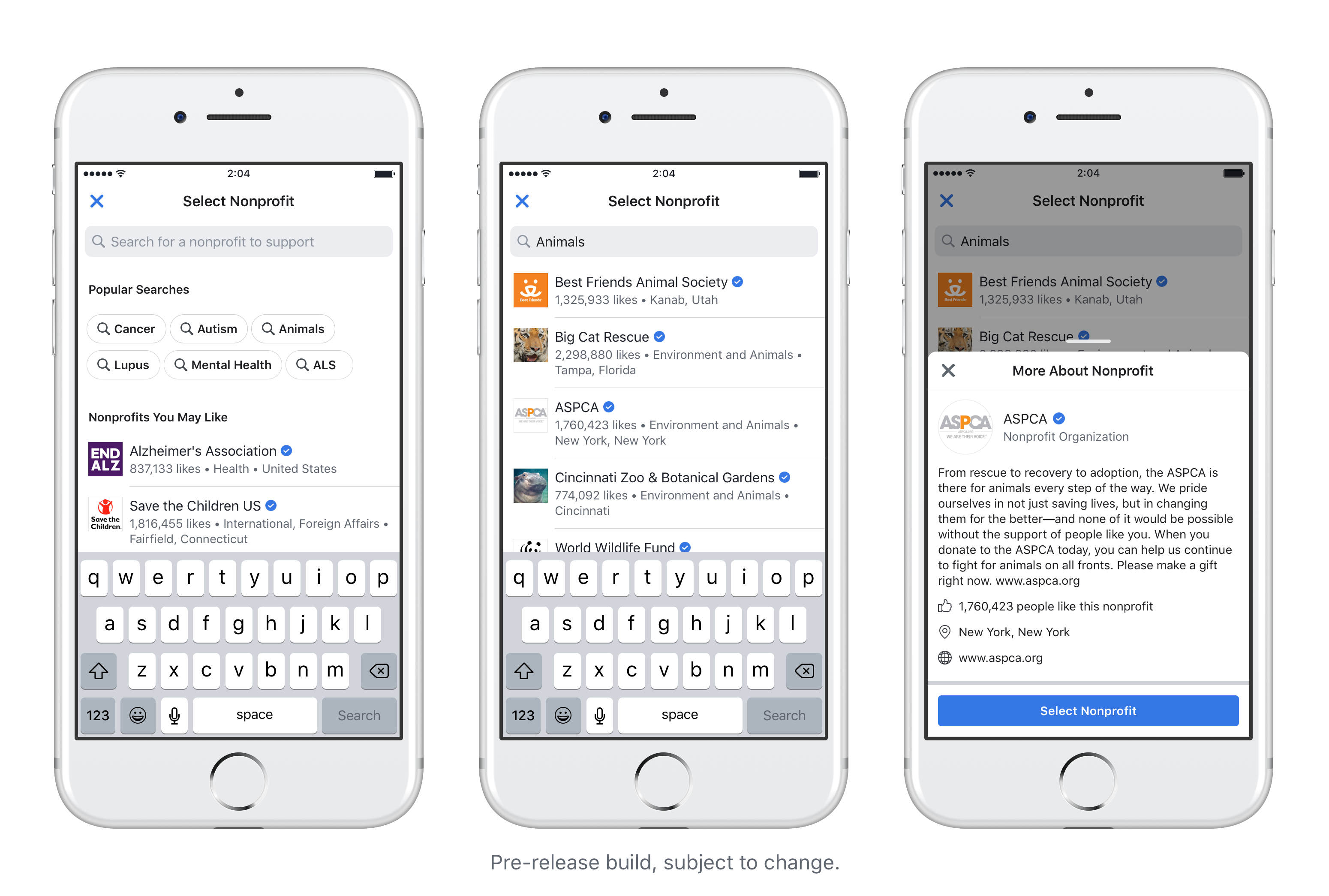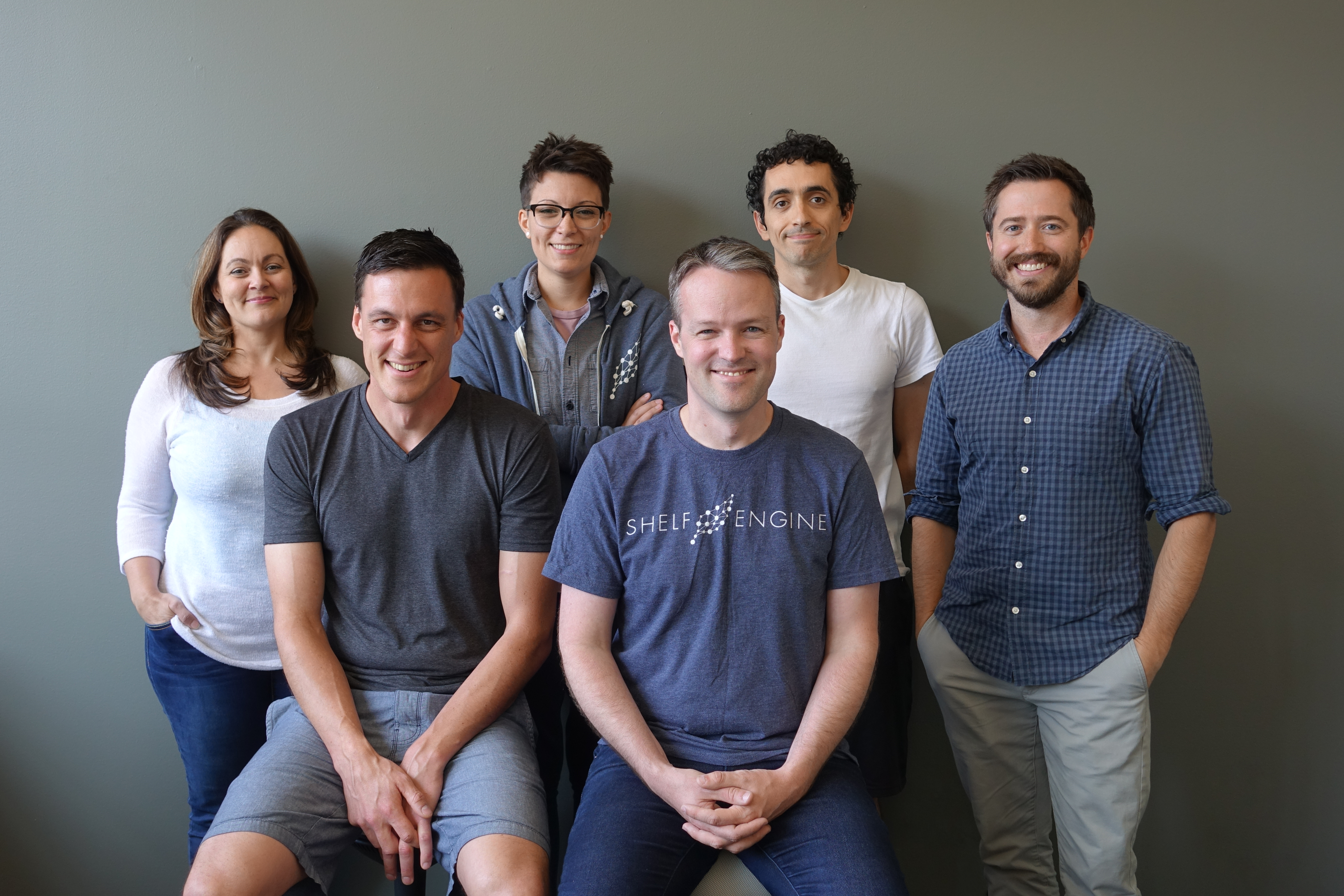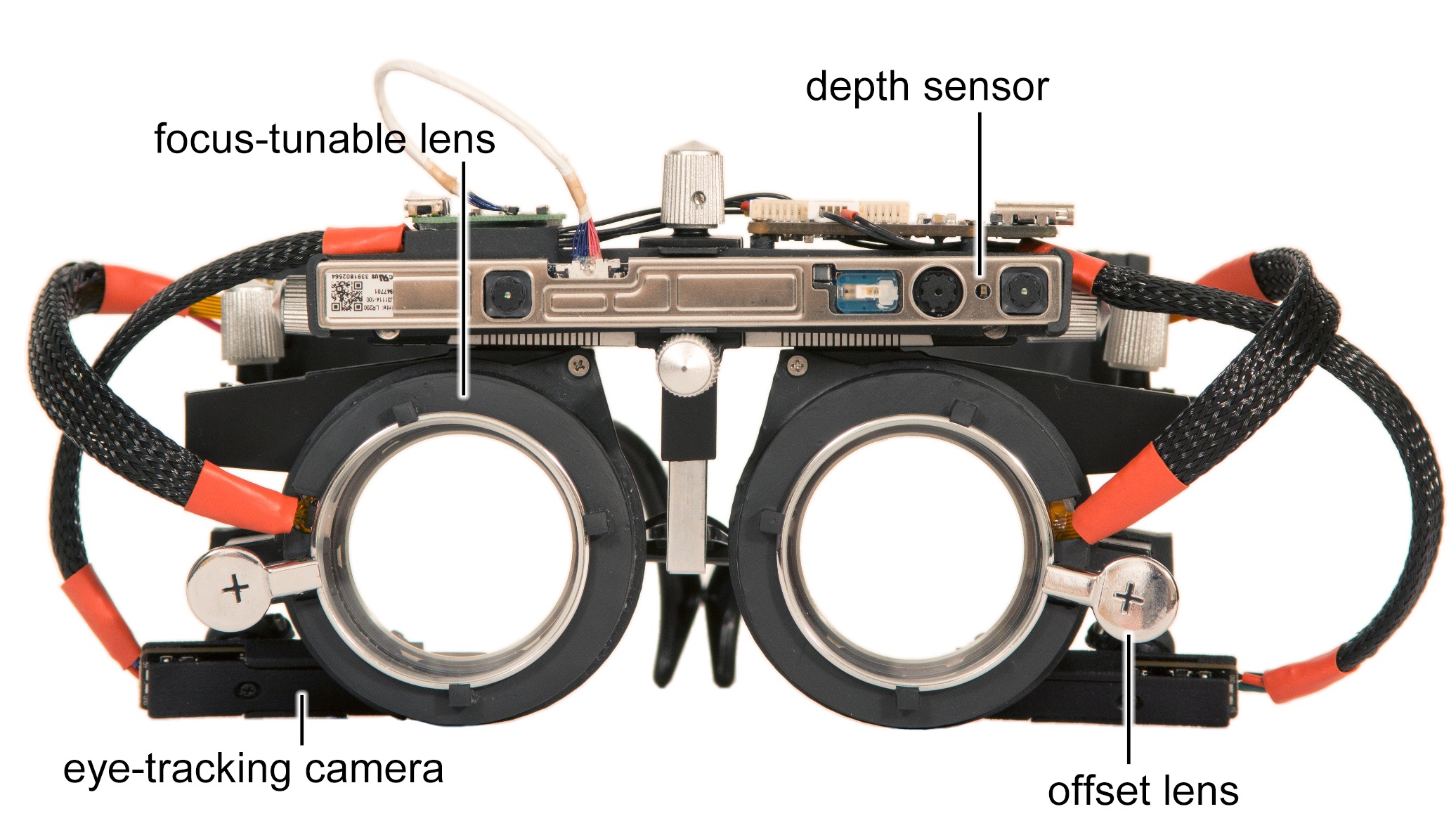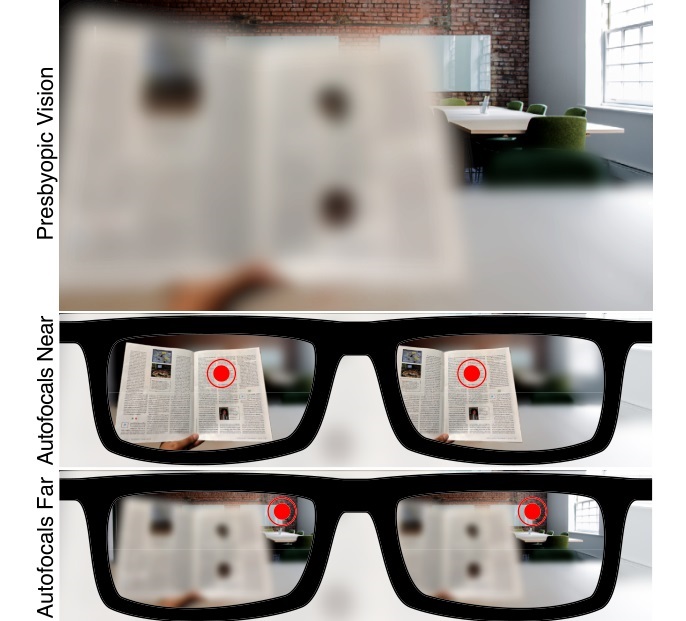Music
Trailers
DailyVideos
India
Pakistan
Afghanistan
Bangladesh
Srilanka
Nepal
Thailand
StockMarket
Business
Technology
Startup
Trending Videos
Coupons
Football
Search
Download App in Playstore
Download App
Best Collections
Technology
Facebook marked the first anniversary of its birthday fundraisers by revealing that more than $300 million in donations have been raised through the feature, which lets users mark their birthdays by creating a donation drive for an organization of their choice. About 750,000 non-profits currently have access to Facebookfundraising tools (but not every user, since they haven&t rolled out to all countries).
The company also said that it is adding several new features based on feedback. These include allowing Pages to create and donate to fundraisers, as well as the ability to add matching donations and co-organizers to fundraisers. Donors will also be able to choose if they want to set up a recurring monthly contribution.
For people who want to create a birthday fundraiser but don&t have an organization in mind already, Facebook plans to include more information about charities in the featureselection tool. The company said its fundraising featuretop beneficiaries include St. Jude, the AlzheimerAssociation, the American Cancer Society, Share Our Strength—No Kid Hungry and the ASPCA.

Last November, Facebook removed its 5% fee on donations, which means all money goes to non-profits. For many charities, Facebook fundraisers are now the most frictionless way to raise donations, including from people who might otherwise never visit the charityown donation links. Facebook fundraisers are a notable example of how social media activism can actually translate into tangible results instead of yet more memes&but, of course, whenever Facebook releases any self-congratulatory announcements, ita good idea to take a step back and look at the potential downsides.
As with almost every other Facebook feature, its fundraising tools have prompted concerns about privacy, particularly donor privacy, which is considered sacrosanct by many organizations (Facebook lets users decide if they want to share their donation with friends). Some charities also have qualms about benefiting from Facebook fundraisers until the company does a better job of policing hate speech, especially if the purpose of their work is aiding marginalized or persecuted minority groups.
In an insightful blog post from last November, fundraising consultant Jeremy Hatch argued that fundraising on Facebook also eliminates the relationship between donors and organizations, &where there are established norms and ethical practices.& He added that non-profits should reconsider before they grow increasingly reliant on a company whose ultimate goal is to gather and monetize user data.
At the same time, Facebookreach leaves many organizations with little choice but to use the platform so they don&t miss out on much-needed funds. One notable example of how effective Facebook fundraisers can be is the more than $20 million raised by users on behalf of RAICES to help migrant families separated at the U.S.-Mexico border by the Trump administration.
- Details
- Category: Technology
Read more: Facebook says birthday fundraisers have raised more than $300 million over the past year
Write comment (93 Comments)Twitter API changes won&t come out until tomorrow, but its ramifications are already being felt. Tapbots released an update today to Tweetbot for iOS that loses many of the Twitter clientmost popular or essential features. It also removed its Apple Watch app. In TweetbotApp Store release notes, Tapbots explained &on August 16th Twitter will disable parts of their public interface that we use in Tweetbot. Because Twitter has chosen not to provide alternatives to these interfaces we have been forced to disable or degrade certain features. We are sorry about this, but unfortunately this is totally out of our control.&
The changes mean that Tweetbottimeline streaming is now disabled, so timelines will refresh every one to two minutes instead&a loss for people who want to see new tweets in real-time. Push notifications for Mentions and Direct Messages will also be delayed by a few minutes, while push notifications for Likes, Retweets, Follows and Quotes have been disabled altogether (Tapbots& release notes say they are looking at how to reinstate some of those in the future). TweetbotActivity and Stats tabs have been removed.
As part of an effort to tighten control over how its services are used by third-party developers, Twitter announced in April 2017 that it will shut down User Streams, Site Streams and other APIs to prepare for the arrival of its new Account Activity API and other products.
Other third-party Twitter clients that will likely be affected by the API changes include Twitterific, Tweetings and Talon, which along with Tweetbot protested in April that they hadn&t been given enough time or information to prepare for the release, which was originally scheduled for June 19. In response, Twitter extended the deadline to August 16. Other apps that have already been impacted include Favstar, which went offline in June as a result of the API changes.
- Details
- Category: Technology
Read more: Tweetbot loses several key features ahead of Twitter’s API change
Write comment (96 Comments)As renewable energy use surges in the U.S. and the effects of global climate change become more visible, companies like Arcadia Power are pitching a nationwide service to make renewable energy available to residential customers.
While states like New York, California and regions across the upper Midwest have access to renewable energy through their utilities and competitive marketplaces, not all states in the country have utilities that are building renewable power generation to offset coal and natural gas energy production.
Enter Arcadia Power and its new $25 million in financing, which will be used to redouble its marketing efforts and expand its array of services in the U.S.
Right now, renewable energy is the fastest growing component of the U.S. energy mix. Itgrown from 15 percent to 18 percentof all power generation in the country, according to a 2018 report from Business Council for Sustainable Energy and Bloomberg New Energy Finance.
And while Arcadia Power is only accounting for 120 megawatts of the 2.9 gigawatts of new renewable energy projects initiated since 2017, its new $25 million in financing will help power new projects.
When we first wrote about the company in 2016, it was just developing solar projects that would generate power for the grid to offset electricity usage from its customers.
Now the company is expanding its array of services. All customers are automatically enrolled in a 50 percent wind energy offset program, where half of their monthly usage is matched in investments in wind farms — and they can upgrade to fully offset their energy usage with wind power. Meanwhile, community solar projects are also available for free or customers can then purchase a panel and receive a guaranteed solar savings on each monthly power bill.
Reduced prices are given to customers through the consolidation of their buying power across multiple competitive energy markets.
Finally, Arcadia is offering new home efficiency upgrades like LED lighting and smart thermostats, along with smart metering and tracking services to improve customers& payment options, the company said.
&The electricity industry hasn&t changed much in the last hundred years, and we believe that homeowners and renters want a new approach that puts them first. Our platform places clean energy, home efficiency and data insights front and center for residential energy customers in all 50 states,& said chief executiveKiran Bhatraju.

Kiran Bhatraju, chief executive officer Arcadia Power
Funding for the new Arcadia Power financing was led by G2VP, the investment firm that spun out from Kleiner Perkins cleantech investing, ValueAct Spring Fund, McKnight Foundation, Energy Impact Partners, Cendana Capital, Wonder Ventures, BoxGroup and existing investors, according to the company. As a result of the investment, Alex Laskey, Opowerfounder and president; Ben Kortlang, a partner at G2VP; and Dan Leff, a longtime investor in energy technology companies, will all join the Arcadia board of directors.
&We&re taking a piece of the savings that is a part of the power purchase agreement,& says Bhatraju. &Customers get a 5 percent guaranteed savings against the utility rate. In competitive markets like Ohio or Maryland, ita shared savings model.&
Beyond the savings, the offsets can do something to reduce the carbon emissions that are exacerbating the problems of global climate change.
&When you build community solar projects you are displacing former fossil fuel plants from being used because these of customers,& Bhatraju said. But the entrepreneur recognizes that they have a long way to go to make a difference. &120 MW is not nearly enough,& Bhatraju said. &We&ve got a long way to go.&
- Details
- Category: Technology
Martin Tripp, the former Tesla employee who was fired from Tesla and thensued by the company, has tweeted a number of photos that allegedly show damaged batteries and flawed practices at Teslabattery factory, CNBC first reported.
In an attempt to corroborate some of his claims, Tripp has posted photos of vehicle identification numbers that he says were delivered with faulty, punctured battery cells.
&As we&ve said before, these claims are false and Mr. Tripp does not even have personal knowledge about the safety claims that he is making,& a Tesla spokesperson told TechCrunch via email. &No punctured cells have ever been used in any Model 3 vehicles in any way, and all VINs that have been identified have safe batteries. Notably, there have been zero battery safety issues in any Model 3.&
In one tweet, Tripp shows what he alleges is proof that Tesla stores waste and scraps in open parking lots and trucks at the Gigafactory, instead of properly storing them in temperature-controlled warehouses.
Tesla sued Tripp in June for $1 million alleging he leaked information with the intent to sabotage Tesla and its CEO, Elon Musk. Tripp then filed a formal whistleblower tip to the U.S. Securities and Exchange Commission alleging the company has misled investors and put customers at risk.
Check out TechCrunchcoverage of the Tripp versus Tesla saga below.
- Details
- Category: Technology
Read more: Tesla whistleblower tweets photos of allegedly damaged batteries
Write comment (90 Comments)
Shelf Engineteam
While running Molly&s, the Seattle-based ready meal wholesaler he founded, Stefan Kalb was upset about its 28 percent food wastage rate. Feeling that the amount was &astronomical,& he began researching how to lower it — and was shocked to discovered Mollywas actually outperforming the industry average. Confronted by the sheer amount of food wasted by American retailers, Kalb and Bede Jordan, then a Microsoft engineer, began working on an order prediction engine.
The project quickly brought Mollypercentage of wasted food down to the mid-teens. &It was one of the most fulfilling things I&ve ever done in my career,& Kalb told TechCrunch in an interview. Driven by its success, Kalb and Jordan launched Shelf Engine in 2016 to make the technology available to other companies. Currently participating in Y Combinator, the startup has already raised $800,000 in seed funding from Initialized Capital, the venture capital firm founded by Alexis Ohanian and Gerry Tan, and is now used at more than 180 retail points by clients including WeWork, Bartell Drugs, Natural Grocers and StockBox.
Shelf Engine order prediction engine analyzes historical order and sales data and makes recommendations about how much retailers should order to minimize waste and increase margins. The more retailers use Shelf Engine, the more accurate its machine learning model becomes. The system also helps suppliers, because many operate on guaranteed sales, or scan-based trading, which means they agree to take back and refund the purchase price of any products that don&t sell by their expiration date. While running Molly&s, Kalb learned what a huge pain point this is for suppliers. To alleviate that, Shelf Engine itself buys back unsold inventory from the retailers it works with, taking the risk away from their suppliers.
Kalb, Shelf EngineCEO, claims the startupcustomers are able to increase their gross margins by 25 percent and reduce food waste from an industry average of 30 percent to about 16-18 percent for items that expire within one to five days. (For items with a shelf life of up to 45 days, the longest that Shelf Engine manages, it can reduce waste to as little as 3-4 percent).
The food industry operates on notoriously tight margins, and Shelf Engine wants to relieve some of the pressure. Running Molly&s, which supplies corporate campuses, including Microsoft, Boeing and Amazon, gave Kalb a firsthand look at the paradox faced by retail managers. Even though a lot of food is wasted, items are also frequently out of stock at stores, annoying customers. Then there is the social and environmental impact of food waste — not only does it raise prices, food rotting in landfills isa major contributor to methane emissions.
 A store manager may need to make ordering decisions about thousands of products, leaving little time for analysis. Though there are enterprise resource planning software products for food retail, Kalb says that during store visits he realized a surprisingly high number still rely on Excel spreadsheets or pen and paper to manage reoccurring orders. The process is also highly subjective, with managers ordering products based on their personal preferences, a customersuggestion or what they&ve noticed does well at other stores. Sometimes retailers get stuck in a cycle of overcorrecting, because if customers complain about missing out on something, managers order more inventory, only to end up with wastage, then scaling back their next order and so on.
A store manager may need to make ordering decisions about thousands of products, leaving little time for analysis. Though there are enterprise resource planning software products for food retail, Kalb says that during store visits he realized a surprisingly high number still rely on Excel spreadsheets or pen and paper to manage reoccurring orders. The process is also highly subjective, with managers ordering products based on their personal preferences, a customersuggestion or what they&ve noticed does well at other stores. Sometimes retailers get stuck in a cycle of overcorrecting, because if customers complain about missing out on something, managers order more inventory, only to end up with wastage, then scaling back their next order and so on.
&Americans want selection at all times, we get furious when a product is sold out, but ita really hard decision to make about how much challah bread to stock on a Monday,& says Kalb. &Yet we are doing that ad hoc.&
When retailers use Shelf Engineprediction engine, it decides how many units they need and then submits those orders to their suppliers. After products reach their sell-by dates, the retailer reports back to Shelf Engine, which only charges them for units they sold, but still pays suppliers for the full order. As time passes, Shelf Engine can make more granular predictions (for example, how precipitation correlates with the sale of specific items like juice or bread).
In addition to providing the impetus for the creation of Shelf Engine, Mollyalso helped Kalb and Jordan, its CTO, build the startupdistribution network. Kalb says Shelf Engine has benefited from the network effect, because when a retailer signs up, their suppliers will often mention it to other retailers that they serve. Kalb says the startup is currently hiring more engineers and salespeople to help Shelf Engine leverage that and spread through the food retail industry.
&Ita world I got to know and I came into the world fascinated with healthy food and making delicious grab-and-go meals,& says Kalb. &It turned into a fascination with this crazy market, which is so massive and still has so many opportunities to be maximized.&
- Details
- Category: Technology
Read more: Shelf Engine uses machine learning to stop food waste from eating into store margins
Write comment (97 Comments)The complex optics involved with putting a screen an inch away from the eye in VR headsets could make for smartglasses that correct for vision problems. These prototype &autofocals& from Stanford researchers use depth sensing and gaze tracking to bring the world into focus when someone lacks the ability to do it on their own.
I talked with lead researcher Nitish Padmanaban at SIGGRAPH in Vancouver, where he and the others on his team were showing off the latest version of the system. Itmeant, he explained, to be a better solution to the problem of presbyopia, which is basically when your eyes refuse to focus on close-up objects. It happens to millions of people as they age, even people with otherwise excellent vision.
There are, of course, bifocals and progressive lenses that bend light in such a way as to bring such objects into focus — purely optical solutions, and cheap as well, but inflexible, and they only provide a small &viewport& through which to view the world. And there are adjustable-lens glasses as well, but must be adjusted slowly and manually with a dial on the side. What if you could make the whole lens change shape automatically, depending on the userneed, in real time
Thatwhat Padmanaban and colleagues Robert Konrad and Gordon Wetzstein are working on, and although the current prototype is obviously far too bulky and limited for actual deployment, the concept seems totally sound.
Padmanaban previously worked in VR, and mentioned whatcalled the convergence-accommodation problem. Basically, the way that we see changes in real life when we move and refocus our eyes from far to near doesn&t happen properly (if at all) in VR, and that can produce pain and nausea. Having lenses that automatically adjust based on where you&re looking would be useful there — and indeed some VR developers were showing off just that only 10 feet away. But it could also apply to people who are unable to focus on nearby objects in the real world, Padmanaban thought.

This is an old prototype, but you get the idea.
It works like this. A depth sensor on the glasses collects a basic view of the scene in front of the person: a newspaper is 14 inches away, a table three feet away, the rest of the room considerably more. Then an eye-tracking system checks where the user is currently looking and cross-references that with the depth map.
 Having been equipped with the specifics of the uservision problem, for instance that they have trouble focusing on objects closer than 20 inches away, the apparatus can then make an intelligent decision as to whether and how to adjust the lenses of the glasses.
Having been equipped with the specifics of the uservision problem, for instance that they have trouble focusing on objects closer than 20 inches away, the apparatus can then make an intelligent decision as to whether and how to adjust the lenses of the glasses.
In the case above, if the user was looking at the table or the rest of the room, the glasses will assume whatever normal correction the person requires to see — perhaps none. But if they change their gaze to focus on the paper, the glasses immediately adjust the lenses (perhaps independently per eye) to bring that object into focus in a way that doesn&t strain the personeyes.
The whole process of checking the gaze, depth of the selected object and adjustment of the lenses takes a total of about 150 milliseconds. Thatlong enough that the user might notice it happens, but the whole process of redirecting and refocusing onegaze takes perhaps three or four times that long — so the changes in the device will be complete by the time the usereyes would normally be at rest again.
&Even with an early prototype, the Autofocals are comparable to and sometimes better than traditional correction,& reads a short summary of the research published for SIGGRAPH. &Furthermore, the ‘natural& operation of the Autofocals makes them usable on first wear.&
The team is currently conducting tests to measure more quantitatively the improvements derived from this system, and test for any possible ill effects, glitches or other complaints. They&re a long way from commercialization, but Padmanaban suggested that some manufacturers are already looking into this type of method and despite its early stage, ithighly promising. We can expect to hear more from them when the full paper is published.
- Details
- Category: Technology
Read more: VR optics could help old folks keep the world in focus
Write comment (98 Comments)Page 4435 of 5614

 10
10





